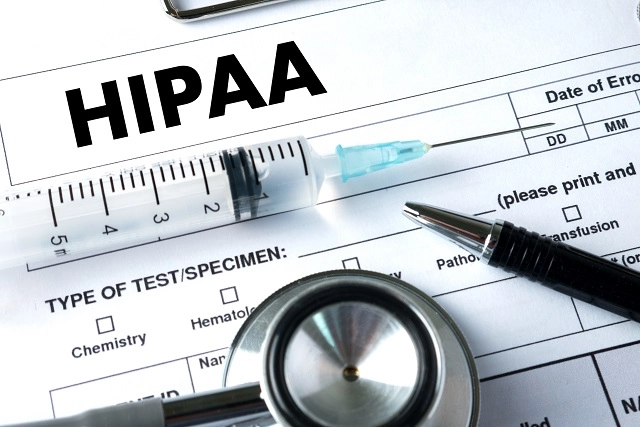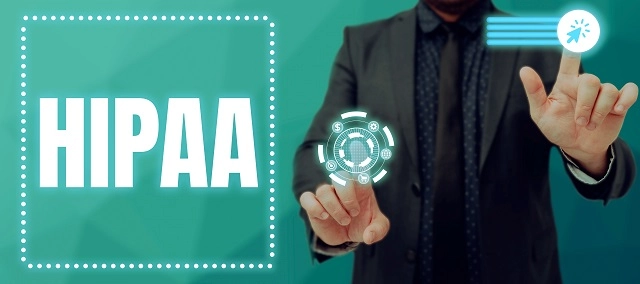Fortinet Acquires Next DLP Strengthens its Top-Tier Unified SASE Solution
Read the release

Companies operating in the U.S. healthcare system need to comply with HIPAA data protection and security guidelines. Organizations must ensure they have implemented the necessary measures to attain HIPAA compliance. Failure to maintain compliance can result in substantial financial penalties and negative publicity.
The major HIPAA requirements are defined in the HIPAA Privacy Rule, HIPAA Security Rule, and Breach Notification Rule. A prerequisite to any HIPAA compliance exercise is to read and understand the rules and determine which apply to your business.
The following HIPAA compliance checklist outlines the steps a company should take to establish and maintain HIPAA compliance.
In this article:
 |
 |
The HIPAA Privacy Rule requires covered entities and business associates to implement appropriate safeguards to protect the privacy of protected health information (PHI). Covered entities are required to take reasonable steps to limit the use, disclosure, and requests for PHI to the minimum necessary to accomplish a specific purpose.
Patients' rights need to be effectively addressed to comply with the HIPAA Privacy Rule. Covered entities must ensure that the following requirements are met.
 |
The Security Rule requires the implementation of appropriate administrative, technical, and physical safeguards to protect electronic PHI (ePHI). Covered entities must address these four general provisions of the Security Rule:
Compliance with the Security Rule requires a covered entity to implement the following safeguards:
 |
 |
All procedures, processes, and policies related to HIPAA compliance should be documented and readily available to present as evidence in an audit. This includes the results of risk assessments, training records, and documentation on vulnerability mitigation efforts. Having the appropriate documentation is essential for providing proof of an organization’s attempts to address compliance issues if an incident occurs.
As risks or violations are identified, develop and implement corrective action plans to minimize risks or eliminate non-compliance issues.
Record all identified risks, violations, and incidents, as well as your remediation efforts.
The Breach Notification Rule requires covered entities to notify affected individuals, the HHS Secretary, and in some cases the media following a breach involving PHI.
A data loss prevention (DLP) solution promotes HIPAA compliance by addressing several of the required safeguards. A DLP platform helps protect the privacy and security of PHI by prohibiting access to the information by unauthorized users. It accomplishes this feat by automatically enforcing an organization’s data handling policy which should include access controls to restrict the use and disclosure of PHI.
The Reveal Platform by Next provides customers with an effective method of protecting PHI. The software deploys next-gen agents that use machine learning and advanced analytics to identify and categorize data at the point of risk. The tool creates baselines at deployment and recognizes suspicious behavior that may indicate risks to PHI.
Reveal stops the deliberate or accidental misuse of sensitive data. The tool also offers education in the form of instructive messages when an individual violates data handling policies. This education helps build a more security-conscious workforce that understands how to keep PHI secure and comply with HIPAA regulations.
Give Reveal a try with a free demo and see how it can help your business maintain HIPAA compliance.
To help you stay on top of HIPAA regulations, we've created a handy PDF checklist. This downloadable HIPAA compliance checklist covers all essential aspects of HIPAA compliance, ensuring your organization adheres to the latest guidelines for protecting patient privacy and data security.
Download now: HIPAA Compliance Checklist (PDF)
Organizations need a Privacy and Security Officer because someone needs to take the lead and responsibility for implementing the necessary processes to maintain HIPAA compliance. In many cases, this individual performs these roles in addition to other tasks. Having a focal point for compliance streamlines the process and provides a resource for other employees to learn about HIPAA guidelines.
Who must be notified in the event of a data breach?
All individuals whose information was involved in the breach need to be notified within 60 days of the incident. The Secretary of HHS gets notified within 60 days in cases where the information of more than 500 individuals has been compromised. The media is also notified when over 500 individuals in a specific State or jurisdiction are affected by the breach.
Physical safeguards are necessary to protect PHI from being stolen or viewed by unauthorized individuals. Electronic media needs to be disposed of properly or have all PHI removed from it before being reused to eliminate the chance of PHI falling into the wrong hands. Physical safeguards have become more important with the rise in the use of mobile devices to access and store sensitive data such as PHI.

Blog

Blog

Blog

Blog

Resources

Resources

Resources

Resources
